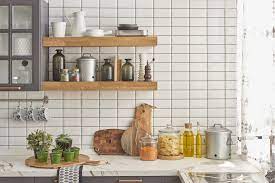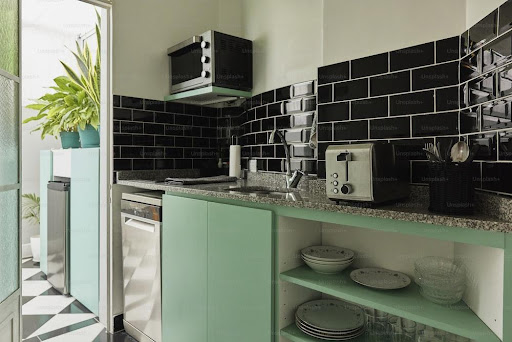Introduction
Ensuring a comfortable and energy-efficient home requires paying attention to one often overlooked aspect: insulation. Upgrading your home’s insulation is a strategic investment that not only enhances comfort but also contributes to energy savings and environmental sustainability. In this guide, we’ll explore the importance of insulation, signs that indicate the need for an upgrade, and the various insulation options available for homeowners seeking improved comfort in their living spaces.
Why is Insulation Important?
Insulation acts as a barrier that prevents the transfer of heat between the interior and exterior of a home. In colder months, effective insulation retains heat inside, keeping the home warm, while in warmer months, it prevents the infiltration of external heat, maintaining a cooler indoor environment. Proper insulation offers several benefits:
- Energy Efficiency: Well-insulated homes require less energy for heating and cooling, resulting in lower utility bills.
- Comfort: Consistent temperatures and reduced drafts create a more comfortable living environment throughout the year.
- Environmental Impact: Energy-efficient homes contribute to a reduction in carbon emissions, promoting environmental sustainability.
- Property Value: Upgrading insulation can increase the resale value of your home, making it an attractive investment.
Signs Your Home Needs Insulation Upgrade
Before embarking on an insulation upgrade, it’s essential to identify signs that your home may be in need of improved insulation:
- Temperature Fluctuations: Uneven temperatures throughout the house, with certain areas feeling excessively cold or hot, indicate insulation issues.
- High Energy Bills: A sudden increase in heating or cooling costs without a corresponding change in usage is a clear indicator of energy inefficiency.
- Drafts and Air Leaks: Noticeable drafts or cold spots near windows, doors, or other openings suggest insufficient insulation.
- Ice Dams: The formation of ice dams on the roof during winter indicates heat escaping from the home, melting snow, and refreezing at the eaves.
- Mold or Mildew: Poor insulation can lead to moisture accumulation, fostering the growth of mold or mildew in certain areas.
- Ineffective HVAC System: If your heating or cooling system is constantly running but struggling to maintain a comfortable temperature, it may be compensating for poor insulation.
Insulation Options for Comfortable Living
Several insulation materials and methods are available to homeowners, each with its unique advantages. The choice depends on factors such as climate, budget, and specific areas of the home requiring insulation:
- Fiberglass Insulation:
- Material: Glass fibers
- Benefits: Cost-effective, fire-resistant, and widely used for attics and walls.
- Cellulose Insulation:
- Material: Recycled paper and cardboard
- Benefits: Environmentally friendly, effective at reducing air infiltration, and suitable for attics and walls.
- Spray Foam Insulation:
- Material: Polyurethane foam
- Benefits: Provides an airtight seal, ideal for sealing gaps and irregular spaces in attics, walls, and crawl spaces.
- Rigid Foam Board Insulation:
- Material: Extruded or expanded polystyrene
- Benefits: Offers high thermal resistance, suitable for insulating foundations, basements, and exterior walls.
- Mineral Wool Insulation:
- Material: Rock wool or slag wool fibers
- Benefits: Fire-resistant, water-resistant, and effective for insulating attics, walls, and basements.
- Reflective Insulation:
- Material: Foil-faced kraft paper, plastic film, or polyethylene bubbles
- Benefits: Reflects radiant heat, suitable for attics, walls, and roofs in hot climates.
- Blown-In Insulation:
- Material: Fiberglass, cellulose, or mineral wool
- Benefits: Quick and efficient application, ideal for attics, walls, and hard-to-reach areas.
- Insulating Concrete Forms (ICFs):
- Material: Foam blocks or panels
- Benefits: Provides both insulation and structural support, commonly used in construction for walls and foundations.
Steps for Upgrading Home Insulation
- Conduct a Home Energy Audit: Hire a professional or use a DIY kit to assess your home’s energy efficiency. Identify areas of heat loss and prioritize insulation upgrades.
- Determine Insulation R-Values: Understand the recommended R-values for insulation in your region. R-value measures the insulation’s thermal resistance, indicating its effectiveness.
- Identify Target Areas: Focus on key areas such as attics, walls, floors, and basements. Prioritize areas with the most significant heat loss.
- Seal Air Leaks: Before adding insulation, seal any gaps, cracks, or openings that allow air infiltration. Use weatherstripping, caulk, or spray foam to create an airtight envelope.
- Choose Appropriate Insulation Material: Select insulation materials based on the specific needs of each area. Consider factors such as moisture resistance, fire safety, and installation ease.
- Professional Installation or DIY: While some insulation projects can be DIY-friendly, others may require professional installation, especially in challenging spaces. Consult with experts to ensure proper installation.
- Monitor Energy Consumption: After upgrading insulation, monitor your energy bills to gauge the impact of the improvements. A reduction in energy consumption indicates the success of the insulation upgrade.
Conclusion
Upgrading your home’s insulation is a proactive step toward creating a comfortable, energy-efficient, and sustainable living space. By identifying signs of inadequate insulation, choosing the right materials, and prioritizing key areas for improvement, you can significantly enhance your home’s overall comfort and reduce energy costs. Embrace the opportunity to make your living environment more pleasant, environmentally friendly, and economically sustainable through thoughtful insulation upgrades.



